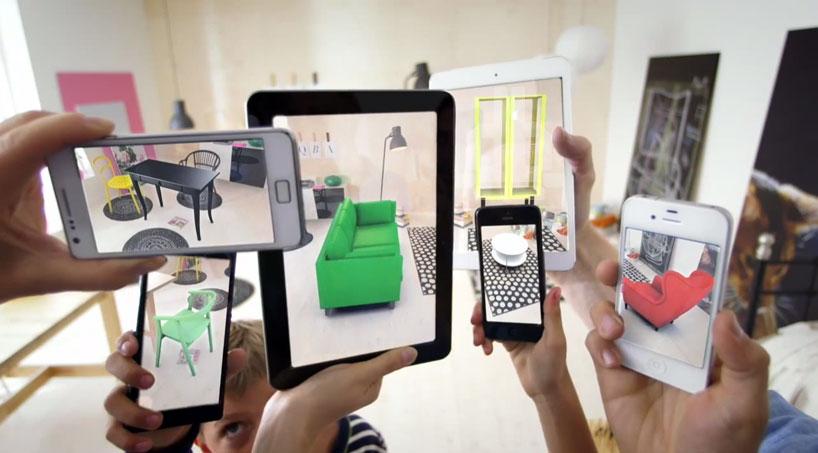In the fast-evolving world of e-commerce, businesses constantly seek new ways to offer customers a more immersive shopping experience. Augmented Reality (AR) shopping technologies are at the forefront of this revolution, enabling customers to enjoy “hands-on” experiences that were once only possible in brick-and-mortar stores. By leveraging AR apps, retailers can allow customers to view products from every angle and even visualize them in real-life scenarios, enhancing confidence and reducing the uncertainty that often comes with online shopping.
The Challenge of E-Commerce
Despite the widespread adoption of online shopping, many consumers still prefer the tactile, sensory experiences that come with visiting a physical store. The inability to try on clothes, feel the texture of fabrics, or assess the size of an item can make online shopping feel incomplete. This is where AR steps in, bridging the gap between the convenience of e-commerce and the practical benefits of in-store shopping.
What Is AR Shopping?
AR shopping refers to the use of augmented reality technologies that allow customers, particularly those using Android and iOS devices, to “try out” products digitally before making a purchase. This experience is similar to how one might evaluate a product in a physical store, reducing the likelihood of returns and fostering greater brand loyalty, especially among younger consumers who crave innovative, immersive shopping experiences.
While AR cannot fully replicate the tactile experience of in-store shopping, it provides a clearer picture of the product, offering customers more confidence in their purchasing decisions. For businesses, developing an AR app can lead to increased sales by providing customers with critical contextual information. It’s also important for businesses to ensure they have secure payment processing systems in place to handle transactions smoothly once customers are ready to buy.
How Retailers Are Using AR
Several leading brands have already embraced AR to create dynamic and engaging customer experiences:
- Sephora: This beauty giant uses a “virtual try-on” app that lets customers see how different makeup products will look on them, a strategy that has proven effective in driving sales in the beauty sector.
- Wayfair: The furniture retailer allows customers to visualize how a piece of furniture would look in their home using an AR app, enhancing the online shopping experience.
- Harley Davidson: Motorcycle enthusiasts can customize and view different bike configurations, from body types to accessories, through an AR app, making the purchasing process more engaging and personalized.
These AR applications not only provide a richer shopping experience but also expand the potential customer base by offering an in-store-like experience to those who may not have easy access to physical locations. When combined with a global payment gateway, AR apps can even extend a retailer’s reach to international customers.
Types of AR Technologies for E-Commerce
Retail businesses can utilize various types of AR technologies to enhance their online shopping experiences:
- Marker-Based AR: This technology uses a trigger, such as a QR code, to produce augmented content like a 3D model, video, or text. For example, scanning a marker on a product’s packaging can reveal a 3D image of the product on the user’s device.
- Markerless AR: Unlike marker-based AR, this technology does not require a trigger. Instead, it places virtual objects in a scene based on the real-world environment or user interaction. Examples include:
- Location-Based AR: Uses GPS data to trigger AR experiences based on the user’s location, such as notifications of nearby stores offering discounts.
- Projection-Based AR: Projects an image onto a flat surface, creating a 3D illusion that customers can interact with, much like a hologram.
- Visualisation AR: Superimposes virtual objects onto the real world through the device’s camera, allowing customers to see how a product, like furniture, would fit into their home.
AR vs. VR: Understanding the Differences
While AR enhances the real world by superimposing digital elements, Virtual Reality (VR) creates a completely immersive experience by transporting users into a digital environment. Here’s how they differ:
- Immersion: AR integrates digital content with the real world, while VR immerses users in a completely artificial environment.
- Equipment: AR typically requires only a smartphone, whereas VR often requires specialized equipment like headsets and controllers.
- Accessibility: AR is more accessible to the average consumer due to its reliance on smartphones, making it more widely adopted in the retail sector.
Boost Your Sales With AR
As AR technology continues to evolve, more businesses are recognizing its potential to engage customers and drive sales. By incorporating AR into their e-commerce strategy, businesses can offer a more interactive and informative shopping experience, appealing especially to younger consumers who are more likely to embrace this technology.
To capitalize on the benefits of AR, businesses should also ensure they have a modern payment processing solution that offers secure global payment gateways and caters to the preferences of AR-savvy customers. With the growing use of AR in e-commerce, staying ahead of the curve could be key to boosting sales and enhancing customer satisfaction.
